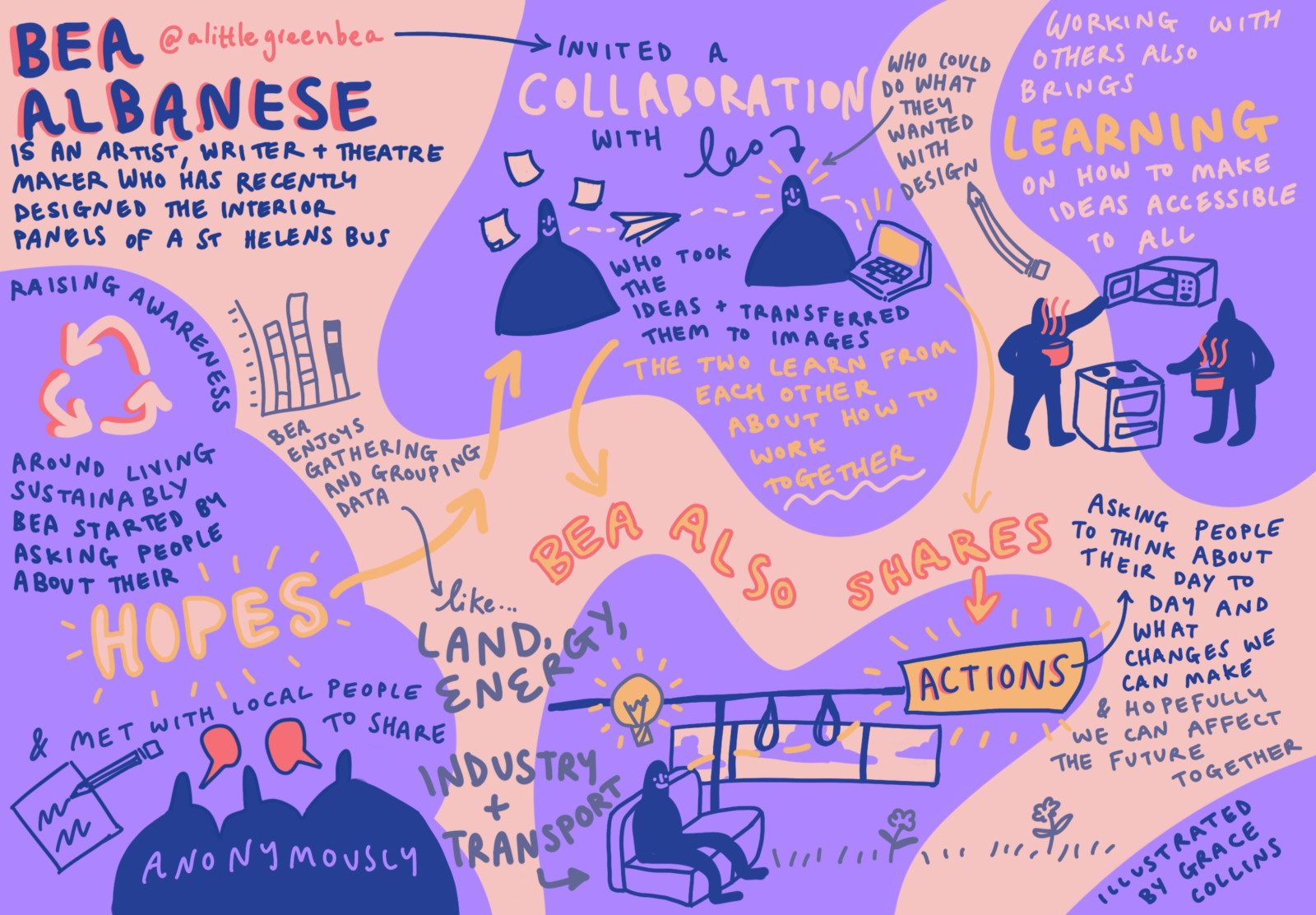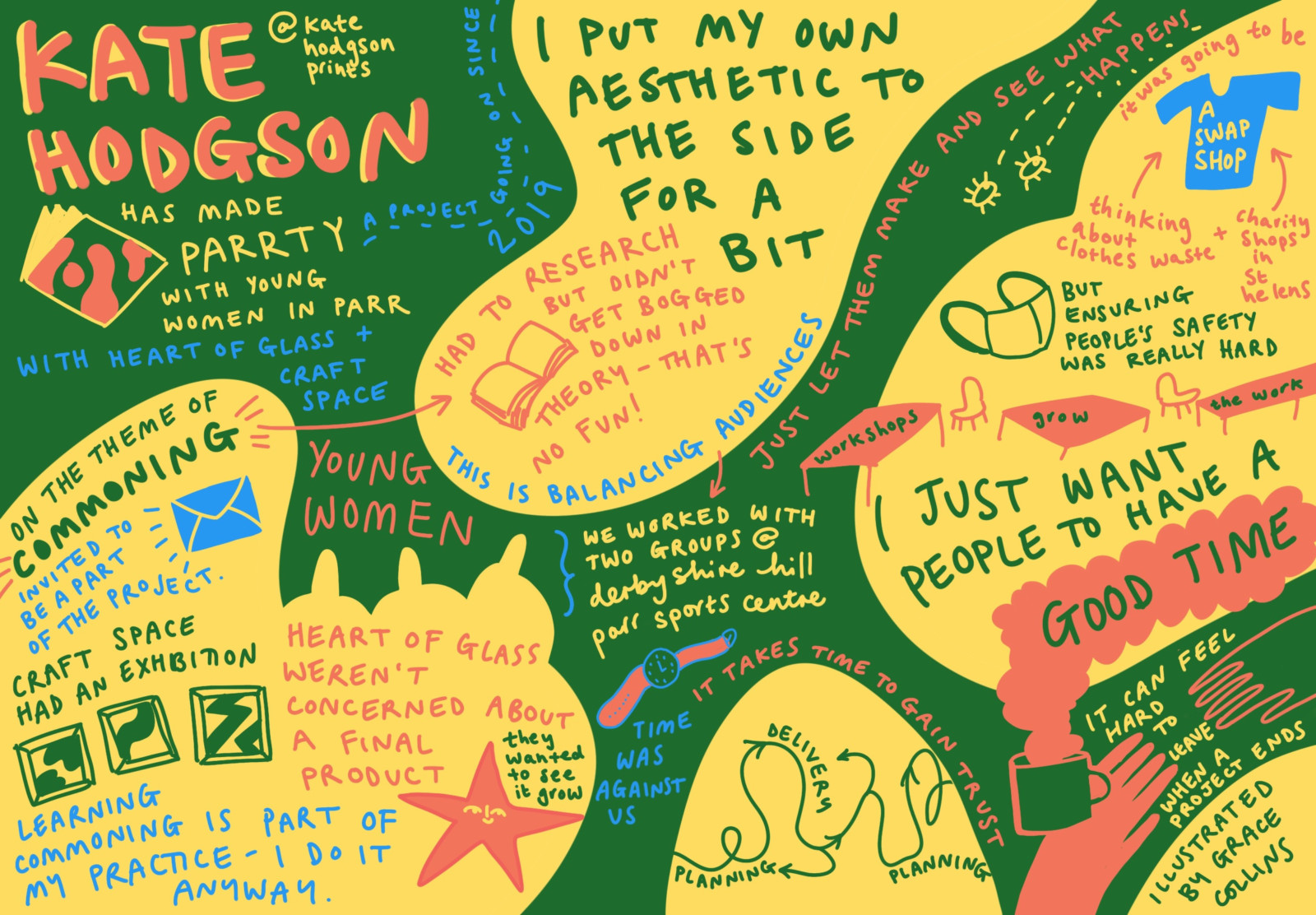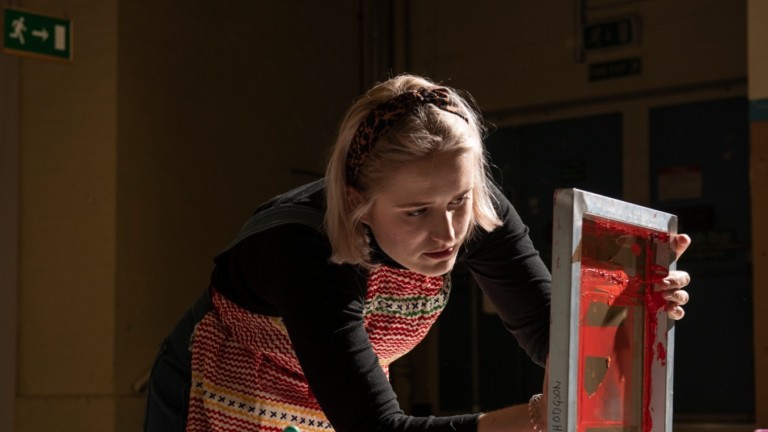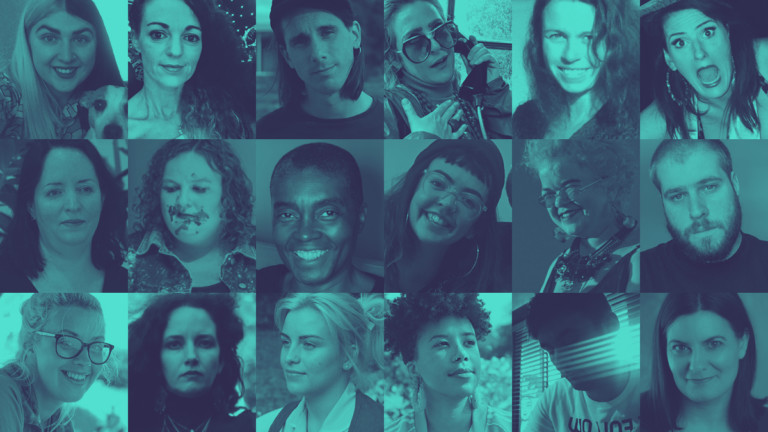Grace Collins interviewed three artists who have made work in collaboration with others.
Writer Gee Collins met up with artists Bea Albanese, Emma Colbert and Kate Hodgson to find out more about their experiences of working as an artist, and what it means to make work with other people. The following article has been written by Gee to introduce these interviews in relation to reality of (art) work and its contexts of time, ethics, and care.
Each person Gee met with has worked with both Heart of Glass and Short Supply. These interviews will be released on our website over this coming month. This work is published in partnership with Short Supply and is set to continue as an ongoing series and part of their brilliant blog.

Solo studio work is increasingly inaccessible to most artists. If you want a sustainable income from the art you make, you’ll probably be drawn to delivering a workshop, a talk, or making something with others, and in turn this can feed back into your art practice. Socially Engaged Art (artwork created with other people, often communities, groups, or individuals) isn’t often a focus of art school education. As more and more commissions ask for some level of collaboration, it feels important to share what this looks like and how artists do it.
In one conversation, artist Bea Albanese summed it up:
“It's interesting being an artist trying to get by, as well as doing what you care about and love. But that's why it's important to talk about it. No one teaches these things in school. So we do our own exploration. We are explorers trying to discover how to survive in this wilderness of capitalism.”
I’ve spoken to three artists thus far who have worked with both Heart of Glass and Short Supply in the last few years. Across conversations with Emma Colbert, Kate Hodgson and Bea Albanese, there’s a few common themes that come to the fore when talking about their recent projects:
Time:
Each of the three artists I speak to wishes they’d ‘logged their hours’. This is the practice of writing down how many hours of work you do on a project so you can invoice for these, rather than guessing and inevitably undercharging because you’re polite. But what counts as work in this context? Time sitting at your desk making an artwork seems obvious, but what about answering emails about a commission? Or waiting for your computer to boot up so you can check if you’ve got any emails? Can we charge for the cumulative hours spent thinking about a project while waiting for the kettle to boil? These moments would arguably be accounted for in office hours, but it can feel difficult for artists to charge the full amount for the work we do.

Ethics:
There can be a tentativeness to call ourselves community/socially engaged artists. The title is loaded with the ethical weight of ‘doing social good’. It implies that you're going to care for people, that your art will be kind and that everyone’s going to be able to access it. Interestingly, these aren’t values that are highly valued in ‘high art’ where there’s an expectation for artworks to be new, challenging and critical. When ethics is a key concern of Socially Engaged Art, how do we move beyond to also consider our role as visual artists who understand form, shape, process, language and more?
Care:
It’s clear that artists care about their work and the people they collaborate with. It might be easy enough to not answer any emails from a paid member of an arts organisation, but from unpaid people who act as project participants? Not so easy. This care also means artists are easily exploited. Especially when the value of an artist, particularly around political topics, has an increasing amount to do with lived experience. When we do not just care for our own curiosity, but for our heritage, our sense of place, our culture, or our community, there is a risk of not caring enough that potentially affects our sense of identity or personal relationship with our community. How do we create boundaries around our care within the professional work that we do?

 Thought
Thought Long Read
Long Read
